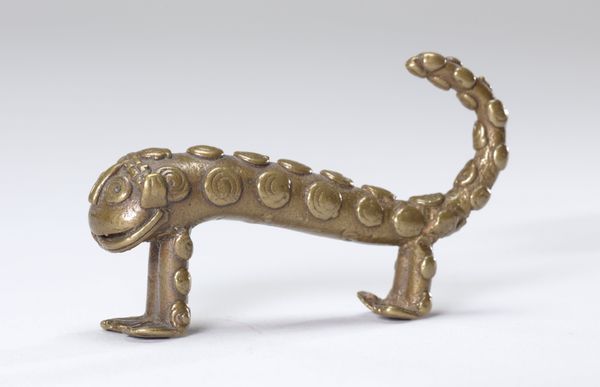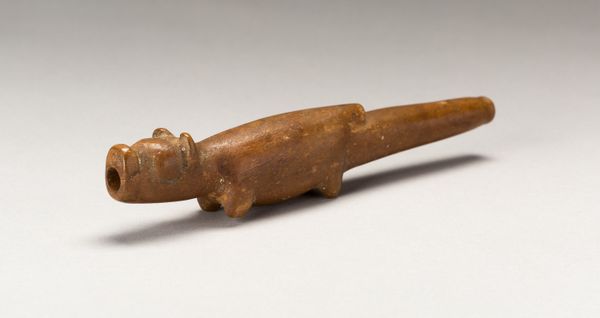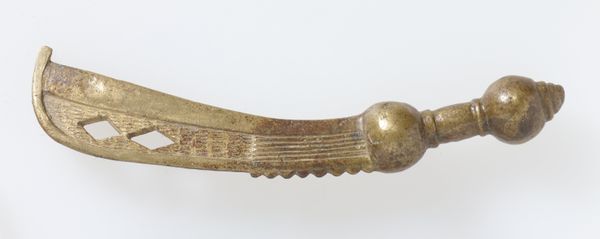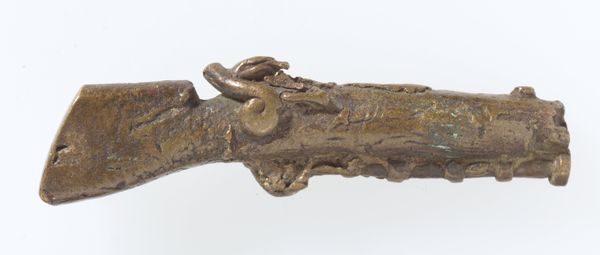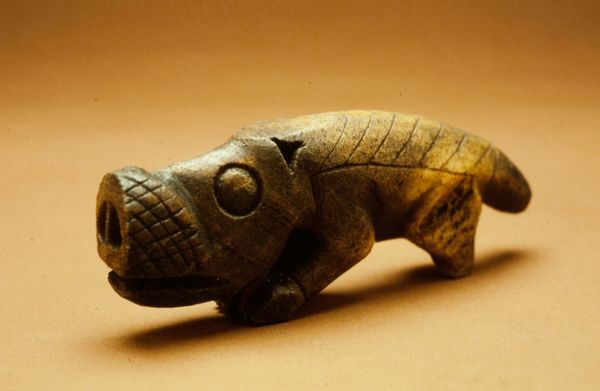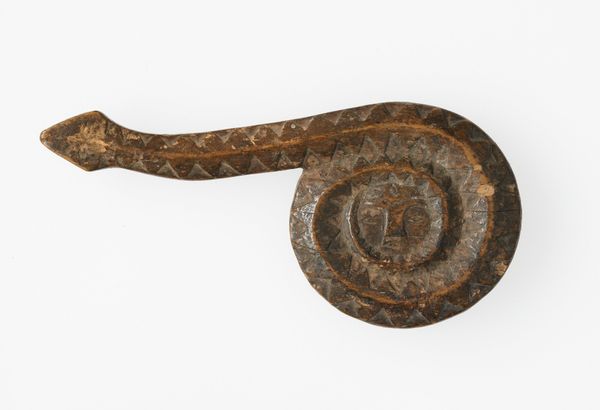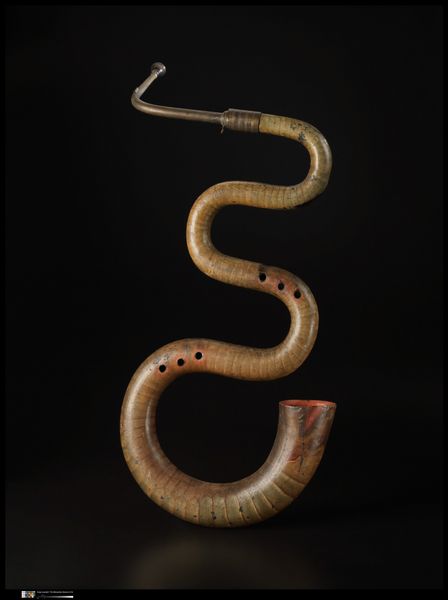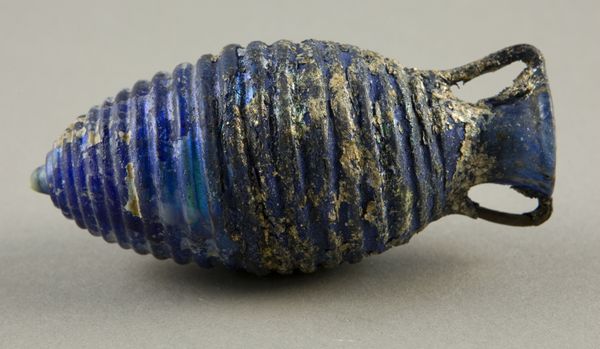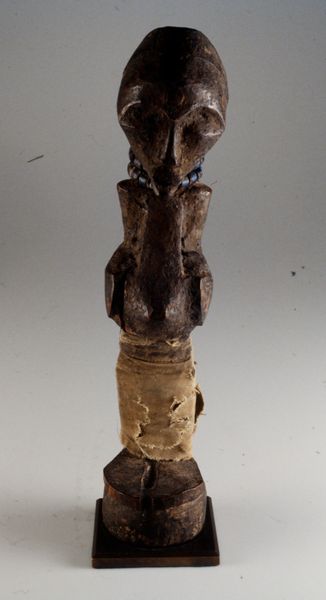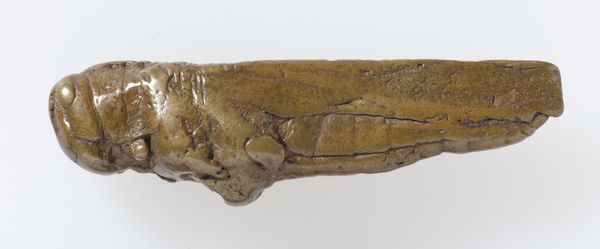![Goldweight [Scorpion] by Akan](/_next/image?url=https%3A%2F%2Fd2w8kbdekdi1gv.cloudfront.net%2FeyJidWNrZXQiOiAiYXJ0ZXJhLWltYWdlcy1idWNrZXQiLCAia2V5IjogImFydHdvcmtzL2U5ODM2YTc5LTZiMWQtNGI0ZC1iZTU4LWM2NmI5NDFiZDA2NC9lOTgzNmE3OS02YjFkLTRiNGQtYmU1OC1jNjZiOTQxYmQwNjRfZnVsbC5qcGciLCAiZWRpdHMiOiB7InJlc2l6ZSI6IHsid2lkdGgiOiAxOTIwLCAiaGVpZ2h0IjogMTkyMCwgImZpdCI6ICJpbnNpZGUifX19&w=3840&q=75)
brass, sculpture
#
african-art
#
3d sculpting
#
brass
#
sculpture
#
figuration
#
sculpture
Dimensions: 1 1/16 x 1 1/16 x 2 in. (2.7 x 2.7 x 5.08 cm)
Copyright: Public Domain
Curator: Here we have a goldweight from the Akan people, crafted sometime in the 19th or 20th century. It's a small sculpture of a scorpion, rendered in brass using the lost-wax casting method, currently housed here at the Minneapolis Institute of Art. Editor: The piece makes me think of potential menace in concentrated form. There’s something so immediate about its coiled tail and sharp-looking pincers. The artist did such a skilled job of highlighting both its stillness and latent power. Curator: The intriguing detail is that this wasn't made as a decorative art object, per se. Among the Akan, such pieces functioned as standardized weights used for measuring gold dust, which served as currency. These weights thus reflect Akan society's engagement with trade and commerce. Editor: It's remarkable how the function shapes its reading, a quotidian object made aesthetically pleasing, and vice-versa, also embedded within a specific cultural context. Is it possible to understand what the scorpion motif signified? Curator: Indeed. Animals were frequent subjects in Akan goldweights, often carrying proverbs or symbolic meanings. The scorpion, with its potent venom, could symbolize strength, protection, or even the dangers of unchecked power, potentially reflecting on the local leadership structures or social anxieties. Editor: It brings to mind the pervasive imagery of the 'trickster,' something powerful packaged in an unassuming, even diminutive form, hinting at the negotiations required between individuals and various levels of authority. I find this sculpture deeply resonant. Curator: This highlights the layers of meaning inherent in objects that might initially seem purely utilitarian. The "Goldweight [Scorpion]" reveals not only artistic skill, but social and political dimensions, reflecting complex systems of value and belief. Editor: Considering this intricate balance of cultural value and commerce that’s materialized within this small object is no easy task, and challenges our common idea that historical artefacts should fit strictly within traditional, hierarchical models. Curator: Agreed, engaging with this seemingly simple object requires grappling with issues of global economics, art history, and political power which shape the narrative. Editor: And reminds us how art and cultural objects actively participate in complex dialogues between identity, community, and the world.
Comments
No comments
Be the first to comment and join the conversation on the ultimate creative platform.
